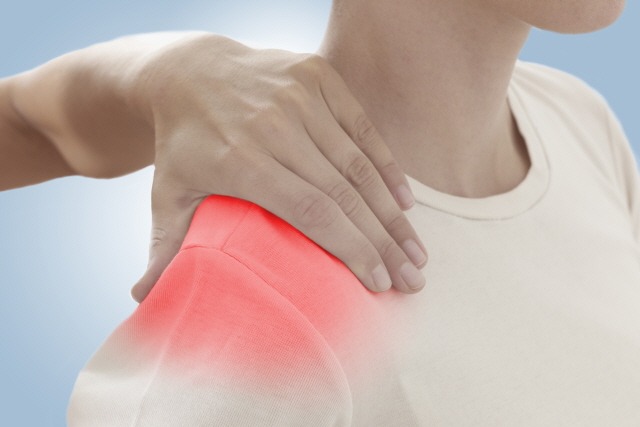
A Manual To Treat Postoperative Syndrome for Shoulder Surgery
By Namwook Cho L.Ac.
Among the shoulder pain patients who visit an acupuncture clinic, many American people have suffered symptoms after various shoulder surgeries.
According to the study, ‘Complications After Arthroscopic Shoulder Surgery: A Review of the American Board of Orthopaedic Surgery Database ‘by Jason J. Shin MD, “The overall self-reported surgical complication rate for arthroscopic shoulder procedures was 10.3%”.
The good news is that acupuncture and herbal medicine have proven their efficacy for the symptoms, and we have a manual to treat them.
Frozen Shoulder Could Caused After A Shoulder Surgery
How To Treat Postoperative Syndrome With Acupuncture Treatment
The postoperative syndrome is not a term indicating just shoulder surgery. It refers to a combination of symptoms in which patients feel discomfort due to various symptoms after all sorts of operations. Still, as of now, there is no consensus definition derived from expert groups.
By using the definition of the rotator cuff postoperative syndrome based on the opinions of clinical
experts, it can be defined as discomfort symptoms that occur at all stages (immediately after operation to rehabilitation stage) after rotator cuff-related operations to treat rotator cuff injuries and disorders, and pain and discomfort symptoms that persist during convalescence of operation. The main symptoms include dysfunction, pain, limited movement, stiffness, or postoperative effects.
According to a study, Incidence and prognostic factors for postoperative frozen shoulder after shoulder surgery: a prospective cohort study by Rinco C T Koorevaar, a frozen shoulder is a potential complication after shoulder surgery. It is a clinical condition that is often associated with marked disability and can have a profound effect on the patient’s quality of life. The Incidence, etiology, pathology and prognostic factors of postoperative frozen shoulder after shoulder surgery are not known. Frozen shoulder was identified in 11% of the patients after shoulder surgery and was more common in females (15%) than in males (8%). The frozen shoulder was encountered after all types of operative procedures.
Treatment Recommendation
Early Stage After The Operation, Acupuncture
Acupuncture therapy proved significant in pain relief and functional improvement compared to the acupuncture control group in early-stage patients after the rotator cuff operation. Acupuncture therapy may be performed by selecting acupoints in the trunk, the bilateral lower extremity, and the distal part of the contralateral upper extremity according to the diagnosis of the Korean medicine doctor to reduce omodynia and improve the function of early-stage patients after the rotator cuff operation.
Early Stage After The Operation, Herbal Medicine
Korean herbal medicine therapy was proven to cause a statistically significant decrease in pain and increased range of motion compared to the untreated control group in early-stage patients after the rotator cuff operation.
As the basic prescription of Korean oriental herbal medicine in the early Stage after the rotator cuff operation, decoctions for omodynia (Gyeoneung-tang, Sodamjesup-tang, Seokyeong-tang) may be prescribed to eliminate blood stasis by promoting blood circulation and to relax muscles and tendons and regulate the channels. It is common to add medicines to the basic prescription in consideration of the patient’s condition and syndrome differentiation. External therapy using Korean herbal medicine may be performed depending on the patient, and prescriptions for invigorating the spleen, stomach, liver and kidney may be used during recovery.
Rehabilitation Stage After The Operation, Acupuncture
The combination of acupuncture therapy and general rehabilitation treatment proved a statistically significant decrease in pain and increased range of motion compared to the untreated control group in rehabilitation stage patients after the rotator cuff operation.
Warm acupuncture therapy may be performed for Jianqian (UE12), Jianyu (LI15), and Jianzhen (SI9)
as the general rehabilitation treatment from the early Stage to 12 weeks after the rotator cuff operation. It is necessary to consider the possibility of infection in the surgical site when performing
warm acupuncture therapy early after the operation.
Electro-Acupuncture
Electro-acupuncture therapy for acupoints around the shoulder, such as Jianliao (TE14), Jianyu (LI15), Jianjing (GB21), Tianzong (SI11), etc., can be combined in the rehabilitation treatment for rehabilitation stage patients after the rotator cuff operation. At this time, paying attention to the possibility of infection in acupoints adjacent to the surgical site when performing the therapy is necessary.
The recommendation is based on the manual, ‘Postoperative Treatment of Musculoskeletal Disease, Clinical Practice Guideline of Korean Medicine for Postoperative Treatment of Rotator Cuff Surgery.’




































